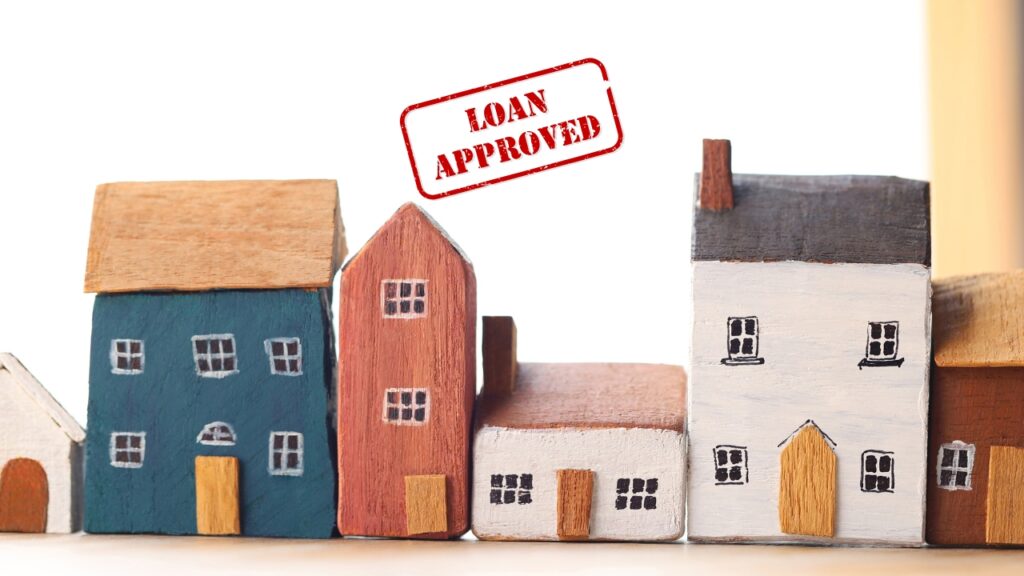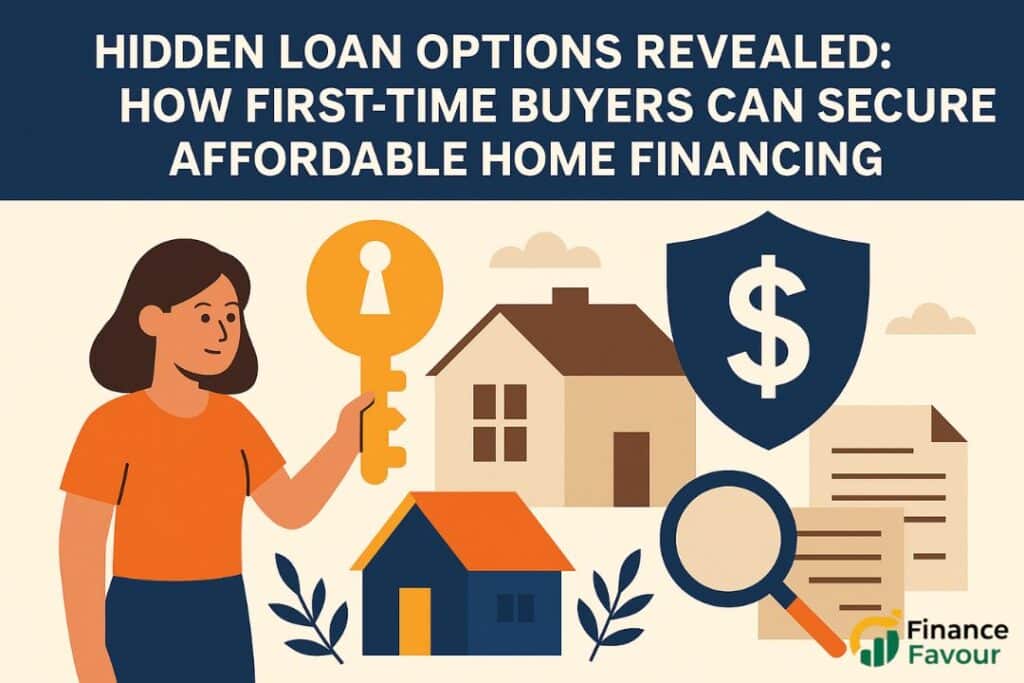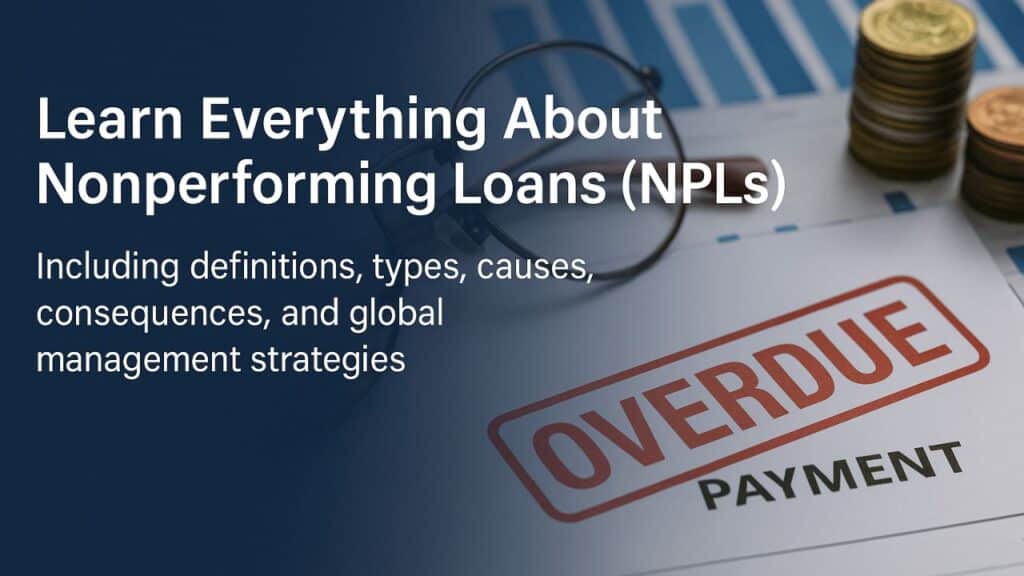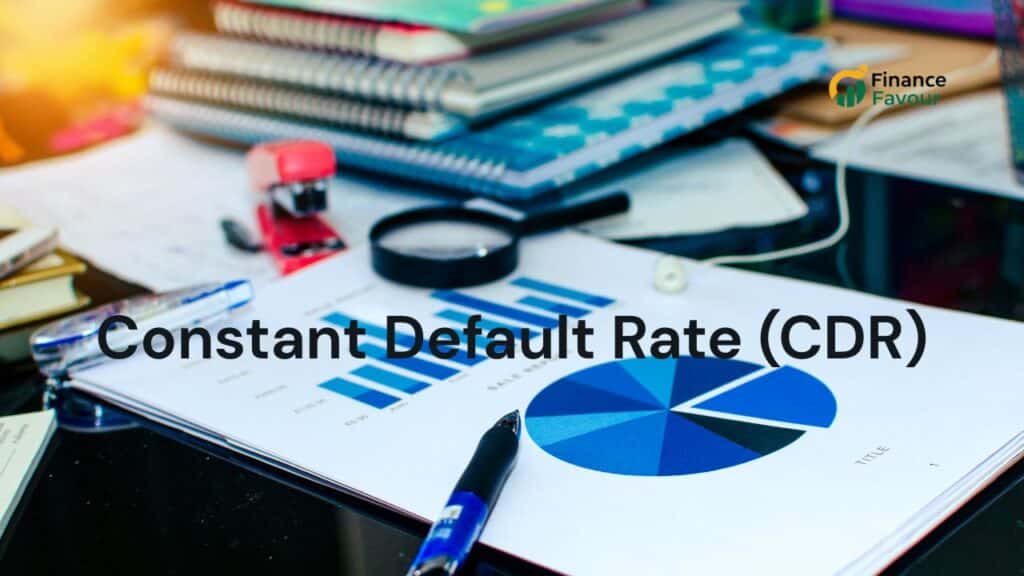Investing in commercial real estate can be a game-changer—but it often comes with its own financial hurdles. That’s where DSCR loans come into the picture. If you’ve ever thought, “How do investors get financing without traditional income verification?” DSCR loans are likely the answer. These loans have become increasingly popular, especially for real estate investors who want an alternative to the traditional income-based underwriting methods. Instead of evaluating personal income, DSCR (Debt Service Coverage Ratio) loans focus solely on the income produced by the property.
This structure is a win for investors, especially those with complex income streams or multiple properties. Whether you’re eyeing a multifamily apartment building or a retail strip mall, understanding DSCR loans could open doors—literally and financially. In this article, we’ll cover what a DSCR loan is, how it works, and why it might be your golden ticket into the commercial real estate game.
What is a DSCR Loan?
Definition and Concept
A DSCR loan is a type of non-traditional commercial real estate loan where the lender bases the approval decision on the income generated by the property rather than your personal income. DSCR stands for Debt Service Coverage Ratio, a key metric that determines whether a property generates enough income to cover its loan payments. Simply put, if your property earns more than it costs to finance it monthly, you’re in good shape.
The appeal? No tax returns, no W2s, no personal debt-to-income scrutiny. Instead, lenders evaluate your property’s cash flow. This makes it ideal for investors with non-standard incomes—like freelancers, small business owners, or real estate entrepreneurs.
Importance in Real Estate Investing
Why should investors care? Because this loan opens doors that are usually shut with traditional banks. Real estate investors often struggle to qualify for standard financing, especially after a few properties. Traditional lenders cap the number of mortgages you can hold. DSCR loans bypass that hurdle by making the property’s performance the star of the show.
It’s a strategic option that supports scaling. Want to add more doors to your portfolio without jumping through tax-return hoops? This is it.
How Does a DSCR Loan Work?
Loan Qualification Criteria
So, how do you qualify? The key metric is your property’s DSCR. Most lenders require a minimum DSCR of 1.25. That means for every dollar of debt payment, your property needs to generate $1.25 in income. The higher your ratio, the less risky you look to lenders. Unlike traditional loans, your credit score might be a secondary consideration. What matters most is: can the property pay for itself?
Role of Net Operating Income (NOI)
Net Operating Income is crucial here. NOI is your property’s total income minus its operating expenses—not including mortgage payments. Think rent revenue minus property management, maintenance, insurance, and taxes. The stronger your NOI, the better your DSCR, and the more likely you are to get approved.
Let’s say your monthly rent income is $12,000 and your operating expenses are $4,000. That leaves you with an NOI of $8,000. If your total monthly loan payment is $6,000, your DSCR would be 1.33 ($8,000 ÷ $6,000)—comfortably above the 1.25 threshold.
Understanding the DSCR Formula
The DSCR formula is pretty straightforward:
DSCR = Net Operating Income (NOI) / Total Debt Service
Let’s break that down:
- NOI: The money your property earns after expenses.
- Total Debt Service: The total amount you pay toward the loan each year (principal + interest).
So, if your NOI is $96,000 annually and your total annual loan payment is $72,000, your DSCR is 1.33. That’s what lenders love to see—it shows your property makes enough to handle the loan and then some.
Why Choose a DSCR Loan for Commercial Property?
Benefits for Investors and Businesses
The biggest draw? Simplicity and speed. DSCR loans cut through the red tape of personal income verification. You don’t have to prove you make a certain amount personally. If your property generates reliable cash flow, that’s usually enough.
Benefits include:
- No Personal Income Verification: Forget submitting W2s or tax returns.
- Faster Approvals: Since lenders focus on property metrics, decisions are quicker.
- Scalability: Easier to grow your portfolio since the loan doesn’t depend on your personal DTI ratio.
Flexibility Compared to Traditional Loans
DSCR loans often come with flexible terms. Interest-only periods, 30-year amortizations, or adjustable-rate options aren’t uncommon. You can tailor the loan to fit your investment strategy. Want to buy, renovate, then refinance? Many DSCR lenders allow that.
This kind of flexibility is rare with banks that typically enforce strict guidelines. So whether you’re flipping, holding, or renting, DSCR loans give you the leverage to operate how you want.
Calculating DSCR: Step-by-Step
DSCR Formula Explained
Let’s dig into the math. Here’s the simple formula again:
DSCR = Net Operating Income / Debt Service
- Net Operating Income (NOI) = Gross Rental Income – Operating Expenses
- Debt Service = Monthly Loan Payment x 12
It’s critical to use accurate numbers. Don’t guess. Use real rental income and verified expenses. Your lender will.
Real-Life Calculation Example
Imagine this scenario:
- Monthly rental income: $10,000
- Operating expenses: $3,000
- Monthly mortgage payment: $5,000
Step 1: Calculate NOI
$10,000 – $3,000 = $7,000
Step 2: Annualize NOI
$7,000 x 12 = $84,000
Step 3: Annual Debt Service
$5,000 x 12 = $60,000
Step 4: DSCR = $84,000 ÷ $60,000 = 1.4
That means for every dollar of debt, your property earns $1.40—safe territory.
Interpreting DSCR Results
Here’s a quick interpretation guide:
- DSCR < 1.0: Your property isn’t generating enough to cover the loan—denied.
- DSCR = 1.0: Break-even—not ideal.
- DSCR 1.25–1.5: Comfortable range—likely approved.
- DSCR > 1.5: Excellent—low risk to the lender.
If your DSCR is low, either increase rents or reduce expenses before applying.
What Is a Good DSCR Ratio?
Ideal Ratios for Lenders
When it comes to DSCR, there’s a magic number: 1.25. This is the industry standard most lenders consider safe. But what does it really mean? Simply put, for every $1.00 you owe in loan payments, your property should earn at least $1.25 in net income. This buffer helps assure lenders that your property can weather fluctuations in income or unexpected expenses.
Some aggressive lenders may accept a ratio as low as 1.10, especially in booming real estate markets. On the other hand, conservative lenders—or those dealing with riskier property types—may demand DSCRs as high as 1.50 or more. Your target ratio should align with the lender’s risk tolerance and the economic environment.
Also, different property types affect this benchmark. For example, multifamily units often get more leniency than niche commercial properties like gas stations or hotels, which are considered riskier due to market volatility.
What Low and High Ratios Indicate
A low DSCR (below 1.0) indicates that your property doesn’t earn enough to cover its debt payments—this is a red flag for lenders. You might still get approved with a low DSCR, but you’ll likely face higher interest rates or be asked to bring in a larger down payment.
A high DSCR (above 1.5) signals strong financial health. It gives you negotiating power, potentially lowering your interest rate or earning you more favorable loan terms. However, while high DSCR is great for loan approval, it might also suggest you’re leaving money on the table. Maybe your rents are too low or the property isn’t leveraged efficiently. So, it’s all about balance—enough income to meet lender standards, but not so conservative that it limits your returns.
Types of Commercial Properties Eligible for DSCR Loans
Office Buildings
Office buildings, whether small medical suites or full-blown corporate towers, are prime candidates for DSCR loans. The key to approval is steady tenancy. Lenders want to see long-term leases with established tenants. A multi-tenant setup is especially attractive—it diversifies income and lowers risk.
Office properties must demonstrate reliable cash flow. Lenders scrutinize rent rolls, lease terms, and vacancy rates. If you’re converting office space or upgrading it to meet modern needs (like co-working adaptations), highlight how this will enhance NOI.
Retail Spaces
Retail properties—from strip malls to standalone stores—are another viable asset class. These properties thrive when located in high-traffic zones with a strong tenant mix. Think: local grocery stores, cafes, or salons. Lenders assess not just current leases, but also the viability of the tenant businesses.
DSCR loans are attractive here because they allow flexibility in income structuring. If a portion of your property is leased but other parts are vacant or undergoing renovation, you can sometimes project forward-looking income. But be careful—those projections need to be backed by market data and solid business plans.
Multifamily Units and Warehouses
Multifamily real estate is probably the most popular category for DSCR loans. Apartments, duplexes, triplexes, and small complexes all qualify. Lenders love them because residential rentals tend to be more stable—even during recessions, people need a place to live.
Warehouses and industrial properties are gaining popularity due to the e-commerce boom. These properties often come with long-term leases from stable companies, making them excellent DSCR candidates. Just ensure zoning is clear and income is proven.
DSCR Loan vs. Traditional Commercial Loans
Key Differences
The core difference lies in how the borrower is evaluated:
- Traditional Commercial Loans: These assess both your personal financials (credit score, income, DTI ratio) and property performance.
- DSCR Loans: These ignore your personal income. Instead, they evaluate whether the property alone generates enough to cover the debt.
Traditional loans are more invasive—expect piles of paperwork, tax returns, and credit scrutiny. DSCR loans, by contrast, are faster and simpler, especially for seasoned investors with multiple properties.
Another big difference is loan limits. Traditional lenders often cap the number of financed properties. DSCR lenders, on the other hand, care more about your experience and the property’s income.
Pros and Cons of Each Option
Here’s a side-by-side comparison:
| Feature | DSCR Loan | Traditional Loan |
| Approval Basis | Property income (NOI) | Personal income and property |
| Required Documentation | Rent roll, leases, expenses | W2s, tax returns, bank statements |
| Approval Speed | Fast | Slower |
| Credit Score Impact | Secondary concern | Primary concern |
| Ideal For | Investors, self-employed, real estate pros | Salaried individuals, conservative investors |
While DSCR loans offer speed and flexibility, they might carry slightly higher interest rates or stricter property income requirements. It’s a trade-off—ease of access vs. potentially lower cost.
How to Qualify for a DSCR Loan
Documentation Needed
Qualifying for a DSCR loan is less about your financial story and more about the numbers your property tells. Still, you’ll need to provide:
- Rent Roll: A list of current tenants and how much they pay.
- Leases: Signed agreements for current tenants.
- Profit & Loss Statements: Showing the property’s income and operating costs.
- Property Appraisal: Confirms market value and condition.
- Bank Statements: Sometimes requested to show rental deposits.
These documents paint the picture of your property’s performance. If the numbers add up and your DSCR is healthy, you’re on track.
Factors That Affect Eligibility
Several elements influence whether your DSCR loan gets approved:
- DSCR Ratio: This is the big one—aim for 1.25 or higher.
- Experience: First-time investors might face more scrutiny. Having a track record helps.
- Location: Properties in high-demand areas are viewed as less risky.
- Condition: A fixer-upper might need rehab before qualifying.
- Vacancy Rate: Higher vacancies can kill your DSCR, so aim for stability.
Lenders might also consider loan-to-value (LTV) ratio. Typically, you’ll need at least 20–30% down. The stronger your DSCR, the more flexible they’ll be on LTV.
Common Mistakes to Avoid with DSCR Loans
Misunderstanding the DSCR Calculation
One of the biggest errors borrowers make is miscalculating DSCR. Some assume gross income counts—nope. Lenders want net operating income, not just what the property makes before expenses. Others forget to factor in seasonal vacancies or maintenance costs. Both can make your DSCR look better on paper than it is in real life—and that’s a red flag for lenders.
Use conservative numbers when estimating. Overestimating income or underestimating expenses is a surefire way to get denied.
Overestimating Rental Income
Another common mistake is projecting future rents that haven’t materialized. Just because your neighbor charges $2,000 a unit doesn’t mean you can. Lenders use actual, in-place rents—not what you plan to charge next year. Inflating rent figures can backfire, especially if your area has rent control or high vacancy rates.
Before applying, make sure your leases are updated, rent is collected consistently, and all income is documented. If you’re using projected rents for a vacant unit, you’ll need a market rent analysis or even a signed lease in hand.
Tips to Improve Your DSCR Ratio
Reducing Operating Expenses
One of the most effective ways to boost your DSCR is by trimming the fat on your operating costs. Look at every line item—are you overpaying for property management or maintenance services? Can you negotiate better rates on insurance or utilities?
Start with a comprehensive audit. Scrutinize recurring costs like landscaping, cleaning, and administrative fees. Small changes—like installing energy-efficient lighting or switching to digital rent collection—can compound into noticeable savings over time.
It’s also smart to eliminate unnecessary services. For example, if your property pays for cable or internet in units that tenants don’t value, consider removing those perks. These minor adjustments can significantly improve your net operating income (NOI), which directly impacts your DSCR.
Increasing Property Income
Raising the rent isn’t your only option for boosting income. Consider adding amenities that tenants are willing to pay for:
- Offer premium parking or storage space.
- Introduce paid laundry facilities or vending machines.
- Rent out signage or advertising space on your building.
Another strategy is to improve tenant retention. Long-term tenants mean fewer vacancies and reduced turnover costs, which keeps your cash flow consistent. Even adjusting lease terms—for example, offering short-term leases at a premium—can increase monthly income and bolster your DSCR.
By focusing on both sides of the equation (income up, expenses down), you can achieve a healthier DSCR and unlock more favorable loan terms.
DSCR Loans for Real Estate Investors
Benefits for Portfolio Growth
Real estate investors love DSCR loans because they scale easily. Traditional lenders often impose limits—after four or five properties, the underwriting process gets cumbersome. DSCR lenders? Not so much. They’re more focused on the deal than your personal credit profile.
This makes DSCR loans perfect for investors looking to expand aggressively. Whether you’re acquiring duplexes, triplexes, or small commercial buildings, these loans offer a path forward without personal financial bottlenecks.
The other advantage is asset-based underwriting. You’re evaluated based on property performance. That means once you’ve mastered one deal, you can rinse and repeat with new properties without dragging your personal income through every application.
Building Long-Term Wealth
The real estate game is all about cash flow and appreciation—and DSCR loans support both. Because they emphasize income-generating assets, you’re naturally encouraged to buy properties that produce returns from day one.
As your portfolio grows, so does your cash flow, equity, and overall wealth. DSCR loans help create a self-sustaining cycle: income from one property funds the down payment for the next. It’s the ultimate form of leverage—without relying heavily on personal finances.
Over time, this approach helps investors build generational wealth, fund retirements, or even pivot into full-time real estate careers. It’s not just about buying a building—it’s about building a financial future.
DSCR Loan Providers and What to Look For
Choosing the Right Lender
Not all DSCR lenders are created equal. Some specialize in certain property types, while others offer more flexibility in underwriting. Start by asking for referrals from other investors or real estate professionals in your network.
When evaluating lenders, consider:
- Minimum DSCR requirement (some accept as low as 1.0, others demand 1.25+)
- Interest rates and whether they’re fixed or variable
- Prepayment penalties or balloon payments
- Loan-to-value (LTV) limits and down payment expectations
- Turnaround time for approvals and closings
Also, check if the lender offers interest-only options, which can boost short-term cash flow—ideal if you’re planning renovations or short-term holds.
What Questions to Ask Before Applying
Before you commit, get clear answers to the following:
- Do you require personal guarantees or is the loan fully asset-based?
- What documentation is needed for underwriting?
- Are there any hidden fees?
- Can I refinance or cash-out after a certain period?
- Do you lend on vacant or underperforming properties with upside potential?
The more transparent and investor-friendly the lender, the smoother your loan experience will be. Remember: a lender is your partner, not just your funder.
Risks Involved with DSCR Loans
Market Volatility
All investments come with risk—and DSCR loans are no exception. One of the biggest concerns is market volatility. A sudden drop in rental demand, a spike in vacancy, or a local economic downturn can shrink your income and jeopardize your DSCR.
Because these loans are based on the property’s cash flow, any disruption can cause your DSCR to fall below lender thresholds. If your DSCR dips below 1.0, refinancing becomes harder, and selling may become necessary at an inopportune time.
To mitigate this risk, always keep a reserve fund for emergencies and aim for properties in stable, growing markets with diversified tenant bases.
Interest Rate Fluctuations
DSCR loans sometimes come with adjustable rates. That means your monthly payments can increase—along with your risk. If your property isn’t generating enough NOI to cover the new payments, you could breach your DSCR requirement.
Before taking on an adjustable-rate loan, stress-test your deal. Ask: “Can I still cover the debt if rates rise 1% or 2%?” If the answer is no, negotiate for a fixed rate or interest-only period until your NOI improves.
Always read the fine print—understand how often rates adjust, how high they can go, and whether there’s a cap. Smart borrowers prepare for the worst and invest accordingly.
DSCR Loan Myths Debunked
Misconceptions in Real Estate Circles
There’s a lot of misinformation floating around about DSCR loans. Let’s clear the air:
- Myth 1: You don’t need a credit check.
While your credit score isn’t the primary factor, most lenders still pull your report. It just weighs less in their decision. - Myth 2: DSCR loans are only for large commercial buildings.
Nope. Investors use them for everything from single-family rentals to fourplexes to warehouses. - Myth 3: You can fudge the numbers to qualify.
Lenders verify everything—rent rolls, deposits, appraisals. Inflated numbers will backfire.
Clarifying the Facts
DSCR loans aren’t a shortcut—they’re a different strategy. They still require responsible investing, solid math, and market knowledge. But for the right investor, they offer freedom and speed that traditional financing can’t touch.
By understanding how they work and avoiding common pitfalls, you can make DSCR loans a powerful tool in your real estate arsenal.
Conclusion
DSCR loans are revolutionizing the way real estate investors and business owners access funding. By focusing on property performance instead of personal income, they open the doors to rapid portfolio growth, easier approvals, and more flexible investment strategies.
They’re not for everyone—you’ll still need a solid property, a decent DSCR, and good market timing—but for those who know how to navigate the numbers, DSCR loans are a game-changer.
From multifamily buildings to retail centers, these loans can fuel your financial freedom without tying you to the rigid rules of traditional banking. Take the time to learn the formula, build your network of DSCR-friendly lenders, and start making your property work for you—not the other way around.
Check this post Do DSCR Loans Show on Credit Report?
FAQs
Yes, many lenders offer DSCR loans for mixed-use properties, as long as the rental income (both residential and commercial) is well-documented and sufficient to meet DSCR requirements.
Most lenders require at least a 1.25 DSCR, though some may accept lower ratios depending on the loan structure, property type, or borrower experience.
Absolutely. They’re often easier to qualify for than traditional loans, especially for self-employed or unconventional earners. Just make sure your property is income-producing.
DSCR loans usually close faster than traditional loans. Expect 2–4 weeks, depending on the lender and how quickly you can provide documentation.
No, DSCR loans are typically offered by private lenders, portfolio lenders, or specialized real estate lenders—not traditional banks.




